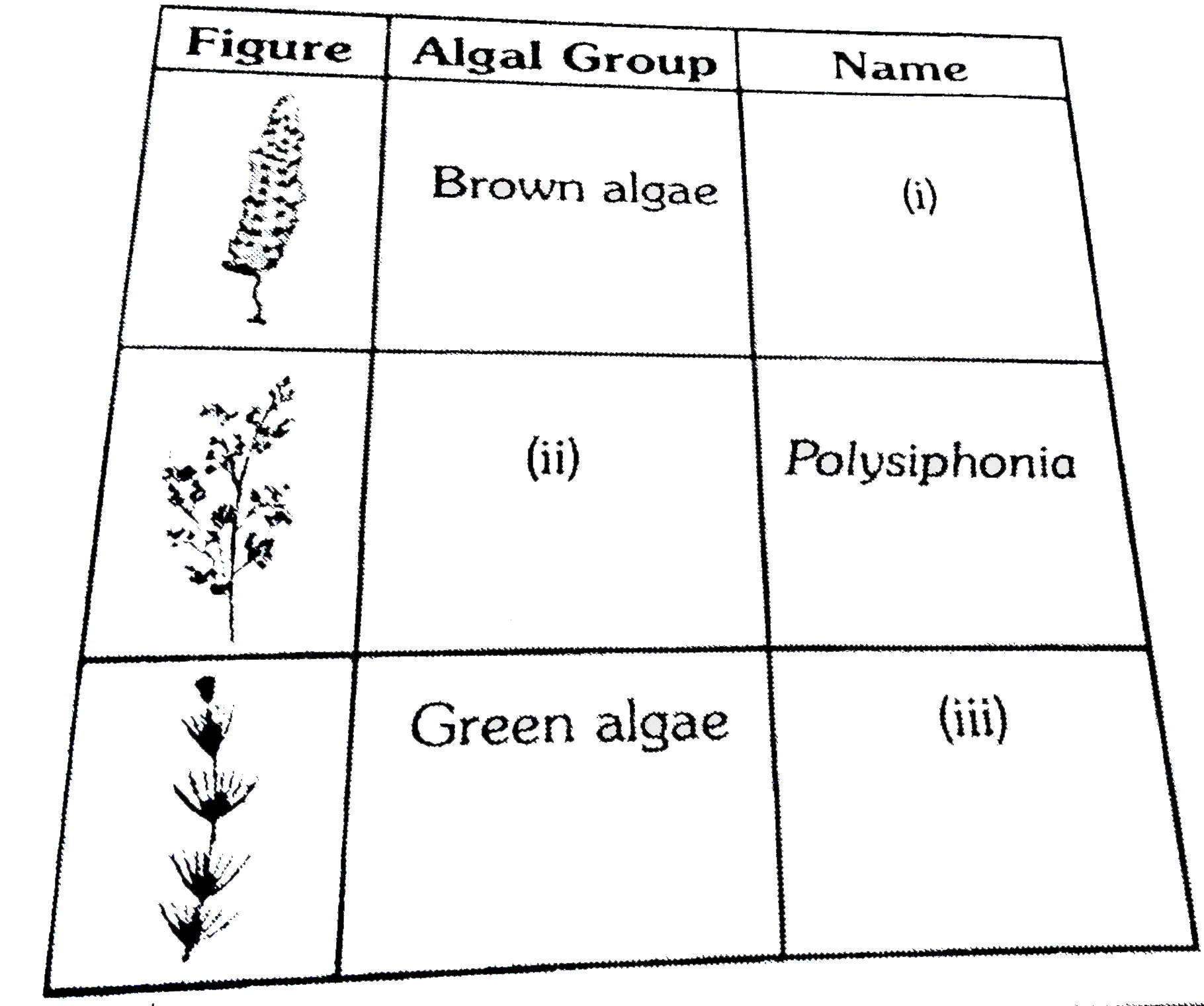Match the following tables.
Table - ITable - II A) Cuscuta Pneumatophores B) Eichhornia II) Trap leaves C) Rhizophora III) Parasite D) Utricularia IV) Root pocket
The correct match is
ABCDIIIIVIII
ABCDIIIIVIII
ABCDIVIIIIII
ABCDIIIIVIII
The correct Answer is:A
To solve the matching question, we will analyze each entry in Table I and find its corresponding match in Table II.
1. Identify Cuscuta:
- Cuscuta is a parasitic plant that lacks chlorophyll and depends on other plants for nutrients.
- Match: Cuscuta → III) Parasite
2. Identify Eichhornia:
- Eichhornia, commonly known as water hyacinth, is a floating aquatic plant. Its roots are adapted for floating and do not require traditional root structures.
- Match: Eichhornia → IV) Root pocket
3. Identify Rhizophora:
- Rhizophora is a genus of mangrove trees that have specialized roots called pneumatophores, which help in gas exchange in waterlogged soils.
- Match: Rhizophora → I) Pneumatophores
4. Identify Utricularia:
- Utricularia, or bladderwort, is a carnivorous plant that traps small aquatic organisms using specialized leaves known as trap leaves.
- Match: Utricularia → II) Trap leaves
Final Matching:
- A) Cuscuta → III) Parasite
- B) Eichhornia → IV) Root pocket
- C) Rhizophora → I) Pneumatophores
- D) Utricularia → II) Trap leaves
Correct Match Order:
- The correct order is:
- A → III
- B → IV
- C → I
- D → II
Thus, the correct answer is 3, 4, 1, 2.
- Cuscuta is a parasitic plant that lacks chlorophyll and depends on other plants for nutrients.
- Match: Cuscuta → III) Parasite
- Eichhornia, commonly known as water hyacinth, is a floating aquatic plant. Its roots are adapted for floating and do not require traditional root structures.
- Match: Eichhornia → IV) Root pocket
- Rhizophora is a genus of mangrove trees that have specialized roots called pneumatophores, which help in gas exchange in waterlogged soils.
- Match: Rhizophora → I) Pneumatophores
- Utricularia, or bladderwort, is a carnivorous plant that traps small aquatic organisms using specialized leaves known as trap leaves.
- Match: Utricularia → II) Trap leaves
- A) Cuscuta → III) Parasite
- B) Eichhornia → IV) Root pocket
- C) Rhizophora → I) Pneumatophores
- D) Utricularia → II) Trap leaves
- The correct order is:
- A → III
- B → IV
- C → I
- D → II
Topper's Solved these Questions
- MORPHOLOGY OF FLOWERING PLANTS BOOK - AAKASH SERIESCHAPTER - MORPHOLOGY OF FLOWERING PLANTS EXERCISE - EXERCISE - III (Previous AIPMT/NEET Questions)
41 Videos
- MORPHOLOGY OF FLOWERING PLANTS BOOK - AAKASH SERIESCHAPTER - MORPHOLOGY OF FLOWERING PLANTS EXERCISE - EXERCISE - I (Fruit)
66 Videos
- MICROBES IN HUMAN WELFARE BOOK - AAKASH SERIESCHAPTER - MICROBES IN HUMAN WELFARE EXERCISE - EXERCISE-III (Previous AIPMT/NEET Questions)
25 Videos
- REPRODUCTION IN ORGANISMSBOOK - AAKASH SERIESCHAPTER - REPRODUCTION IN ORGANISMSEXERCISE - Exercise-III (previous AIPMT/NEET Questions)
19 Videos
Similar Questions
Match the following
List - IList - IIA) TrichomesI) CambiumB) Root hairsII) LeavesC) MesophyllIII) UnicellularD) DicotyledonousIV) Epidermal hairs stem
View SolutionMatch the following
List -I List - II A) False fruit I) BananaB) Pathenocarpic fruit II) Jack fruitC) Aggregate fruit III) Annona(D) Composite fruit IV) Pea V) Apple
View SolutionMatch the following
{:("List - I", "List - II"),("(A) Taeniophyllum","(I) Epiphyte"),("(B) Ground nut","(II) Mangrove plant"),("(C) Vanda","(III) Photosynthetic "),(," roots"),("(D) Rhizophora","(IV) Nodular roots"),(,"(V) Stilt roots"):}
View SolutionStudy the followig table and identify (i) (ii) & (iii):-

View SolutionMatch the column I and II
Column IColumn II(a) Apocarpous(i) Papaver(b) Syncarpous(ii) Michellia(c) Epiphyllous(iii) Cashew(d) Cotyledon(iv) Aloe
View SolutionFind the correct match :
Column - IColumn - IIA. Rauwolfia(i) RhizomeB. Quinine(ii) RootC. Curcuma longa(iii) Bark
View SolutionMatch the following
Column IColumn IIa.Amphisarca(i)Aegleb.Pepo(ii)Cucumisc.Drupe(iii)Ananasd.Sorosis(iv)Juglans
View SolutionWhich of the following is correct match in the given table?

View SolutionMatch the following?
(i) Microsporophyll (A) Carpel (ii) Megasporangium (B) Ovule (iii) Microsporangium (C) Stamen (iv) Megasporophyll (D) Pollen sac
View SolutionMatch the column I and II
Column IColumn II(i) Chrysophyte(a) Gonyaulax(ii) Dinoflagellate(b) Euglena(iii) Euglenoids(c) Diatom(iv) Slime moulds(d) Plasmodium
View Solution
